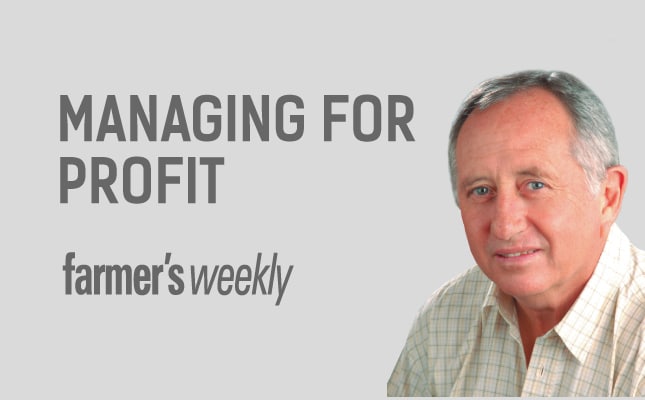
The massive minimum wage rate increase for farm labour will go down in the history of South Africa as one of the most damaging and short-sighted acts ever committed by our government. Having got that off my chest – what now? Incompetent political leaders are a fact of life and, as managers, we’re going to have to learn to deal with them. But how?
READ:The difficulties posed by a minimum wage
In order to survive, a business has to make a profit. There are two ways to do this. Get revenue up. Get costs down. And while I’m about it, let’s get one thing straight, once and for all. Creating employment is not up to you, it’s government’s job.
To do this, government should create an environment for business to thrive. When this happens, employment automatically follows.
As a business manager, you have one job – to run a profitable and sustainable business.
Brainstorm
To deal with the bombardment of high costs that come at us, the first step must be a meticulous examination of every single revenue and expense line in the business. Brainstorm and identify ways of lifting revenue and reducing costs, taking care not to do things that help short term, but leave you worse off long term. I know wages are foremost in everyone’s mind at the moment, but don’t get fixated on this figure. Look at everything.
It’s not the first time we’ve had to deal with shock cost increases. There was the 1973 oil price shock, when Opec lifted the price of crude oil from US$20/barrel to US$100/barrel overnight. We thought the sky would fall. But then we sat down and explored ways of getting through it. I remember my boss involving a few outsiders – even one of our manager’s wives – and it was a revelation to hear the brilliant ideas that came from these people on the fringes of the business. It’s a lesson I’ve never forgotten, so don’t hesitate to bring a few informed outsiders into the discussion.
Calculations
Since the labour cost increase was announced, the reaction of many farmers on being interviewed for their thoughts has been to say that they’ll have to mechanise. Where this is possible it’s an obvious option, but do the calculations carefully, taking into account all the costs of machine ownership, including ‘hidden’ factors, such as interest on capital, realistic provision for replacement and potential negative impact on yields and product quality.
Once again I speak from experience. In the early 1980s, we made a poorly researched decision to mechanise our cane harvesting. It proved to be more expensive than hand cutting and even more damaging, and cost us dearly in reduced yields due to compaction and sucrose reduction. Take care. Every farmer has also mentioned the need for improved productivity and, yes, this has to be the key to paying better wages, but how exactly is it to be achieved?
Fundamentals
While each job on each farm will need to be handled differently, there are a few fundamental principles for high productivity from people whether you’re farming apples in Grabouw, sheep in the Karoo, maize in the Free State or macadamias in the Lowveld.
Here they are…
- People cannot work productively if:
- They’re hungry or sick.
- Their home lives aren’t reasonably comfortable.
- They’re not adequately trained for the job.
- They don’t have the proper tools for the job.
- They don’t know what’s expected of them.
- People will be more productive if:
- They’re treated with respect.
- They receive feedback and know how they are doing.
- They have ‘ownership’ of their areas (the irrigator allocated a specific field, tractor driver their own tractor and so on).
- They receive recognition and praise for outstanding performance.
- They are incentivised by being rewarded for achieving set targets.
Contact Peter Hughes at [email protected]. Please state ‘Managing for profit’ in the subject line of your email.
This article was originally published in the 15 March 2013 issue of Farmer’s Weekly.







